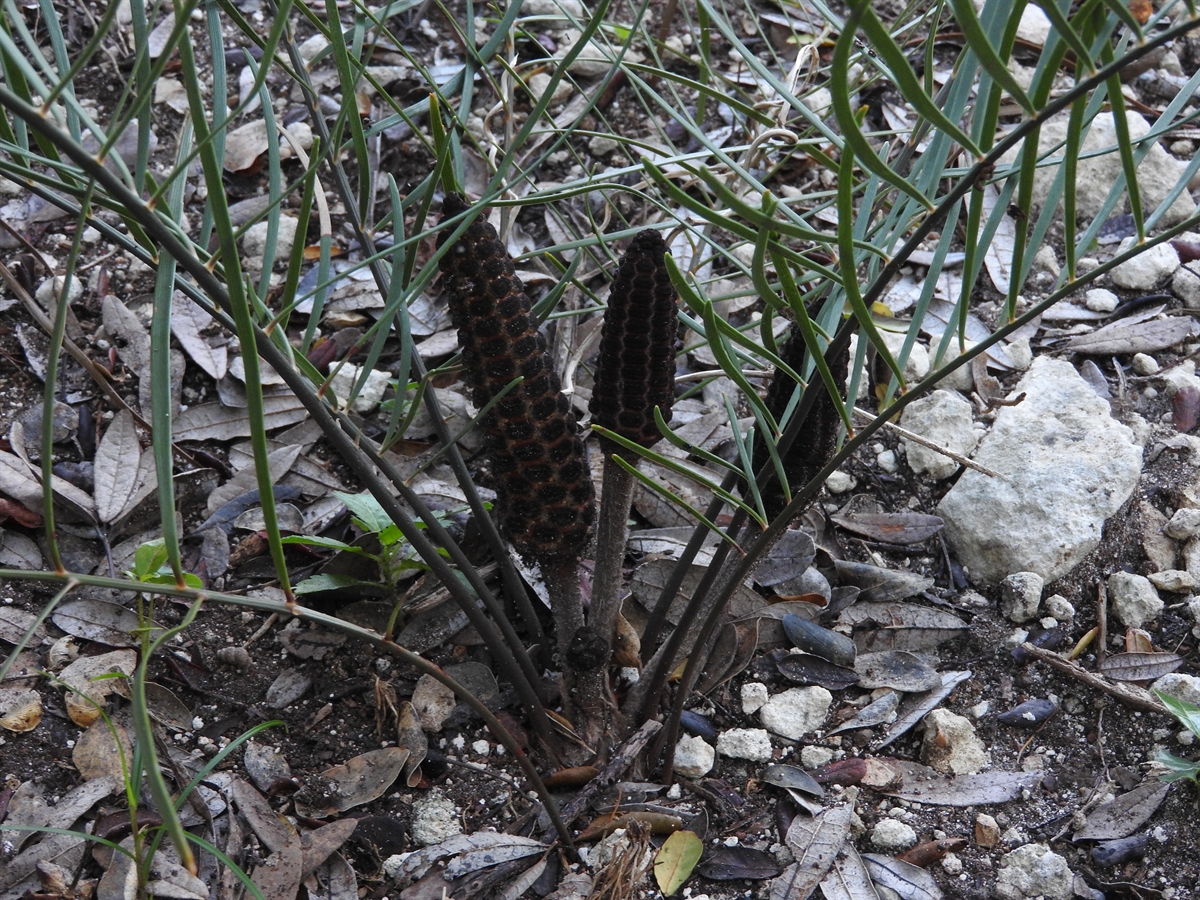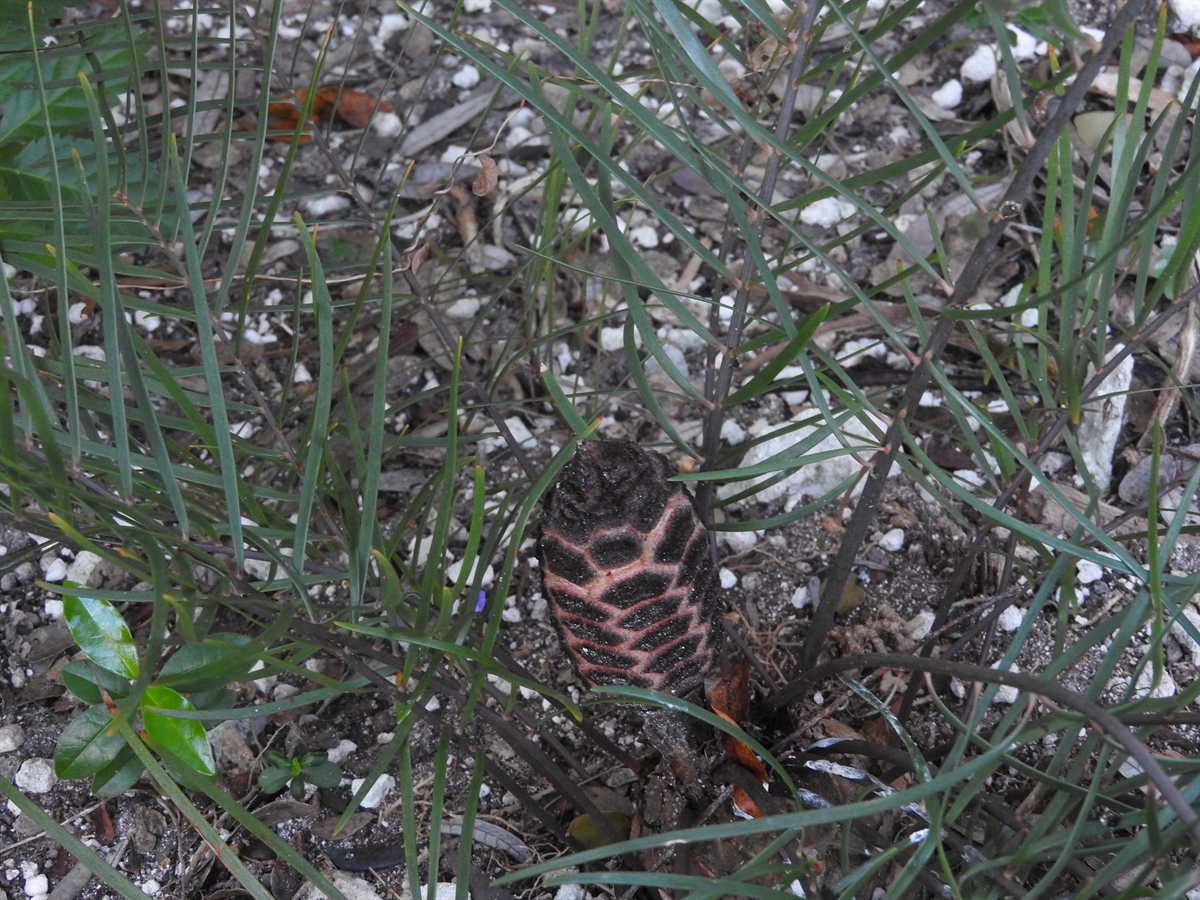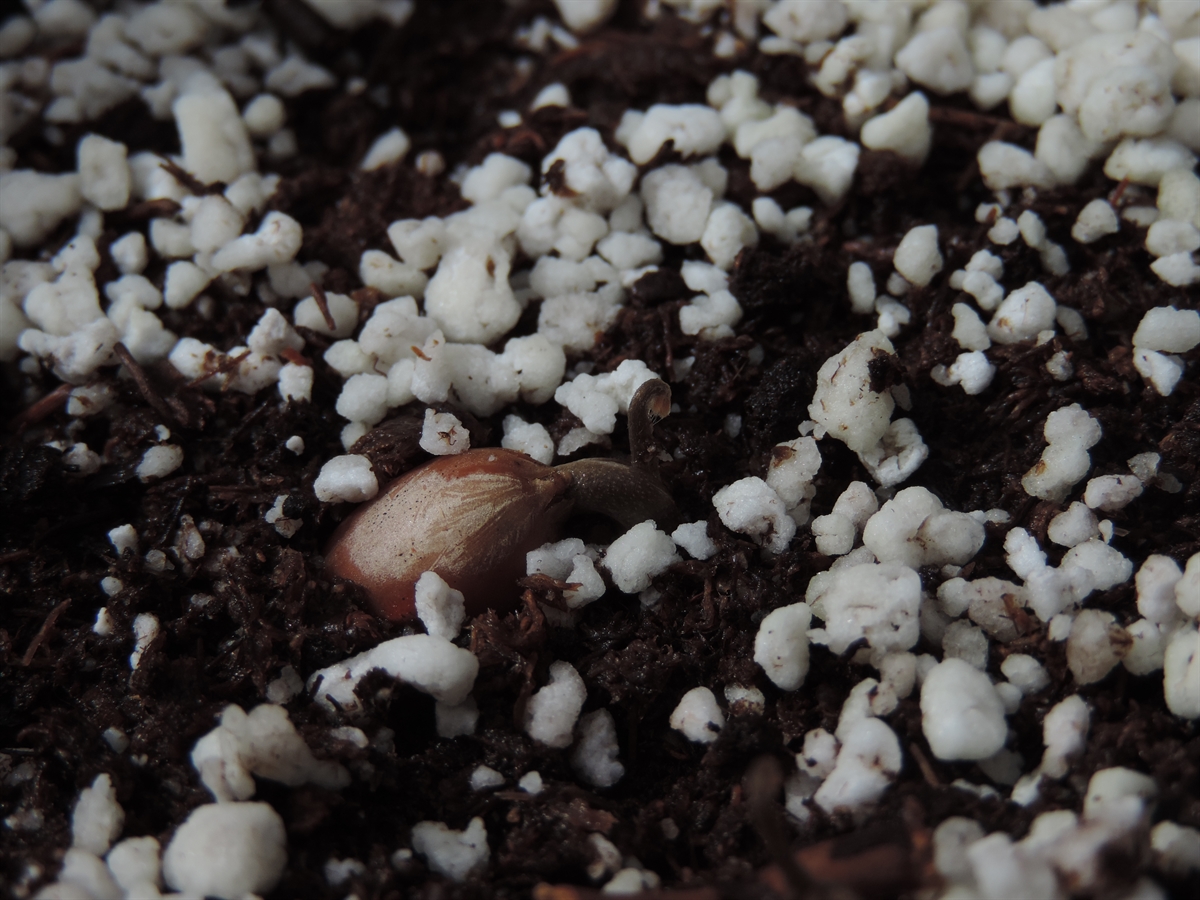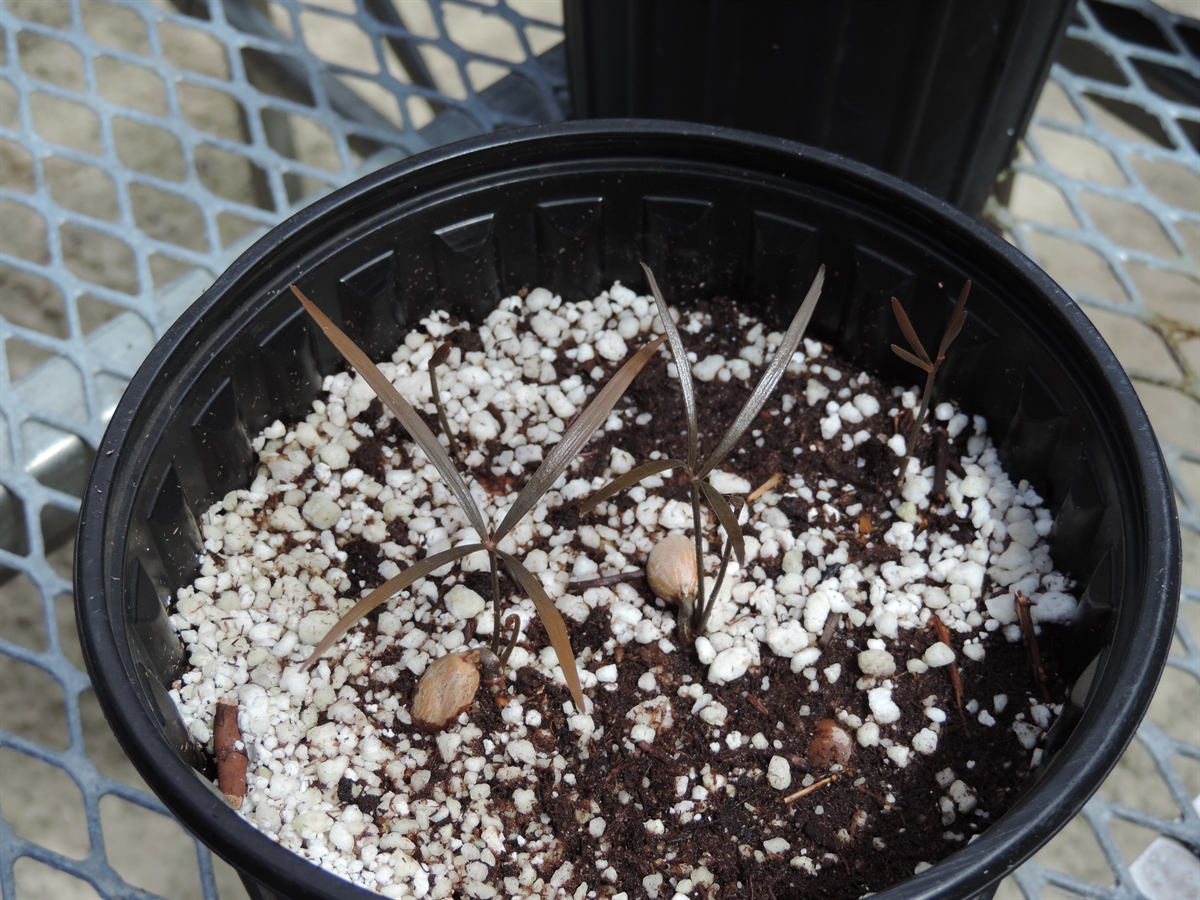Habit: Zamia angustifolia grows from an underground vertical stem 20-50 in length and to 10 cm in diameter. Leaves are produced from the top of the tuber. The leaves are pinnately compound, to 1 meter in length and covered with rusty brown hairs when young. The leaflets are narrow, to 25 cm (typically shorter) in length and to 0.5 cm in width, with a slightly toothed apex and an entire margin (occasionally irregular).
Zamia angustifolia is dioecious. The reproductive structures are cones. Microsporangiate cones are solitary or in groups, to 8 cm in length and 2 cm in diameter. There are 15 – 20 series of peltate hexagonal structures underneath which are the microsporagium.
The megasporangiate cones are solitary, to 13 cm in length and 4 cm in diameter. There are 5-8 series of peltate hexagonal structures underneath each ovules are located. The entire structure is covered with reddish hairs.
Habitat: Zamia angustifolia grows coastal Dry Broadleaf Evergreen Formations- Shrublands/Dwarf Shrublands with an unconsolidated Holocene sand substrate and in Pine Woodlands.
Distribution: Zamia angustifolia is endemic to the Lucayan Archipelago and Cuba. It is listed as Vulnerable by the IUCN and as Appendix II by CITES.
Medicinal/Cultural/Economic usage: Zamia angustifolia is not known to be used medicinally or culturally in the Lucayan Archipelago but is now in the horticultural trade.




